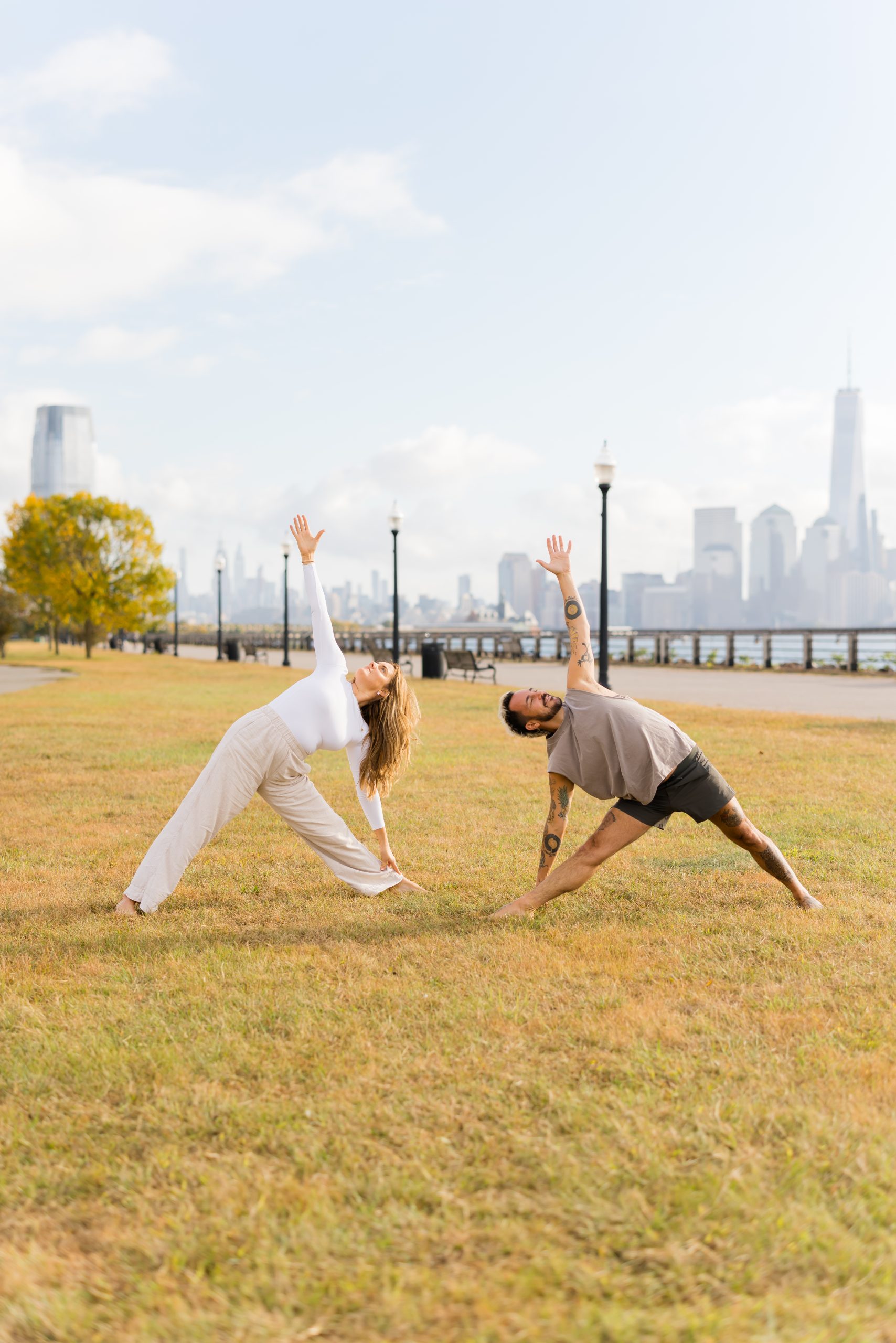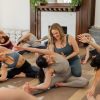
There are so many unique ways to create an inclusive, supportive and dynamic yoga class… but the at the root of it all mostly sits the concept of mindfulness. You must first foster a sense of authenticity through being present and tuning into the room (whether in person or giving a class virtually). The energy and intention you set for your students comes from you, and they’ll likely carry it with them long after the class takes place.
Here is a short yoga sequence towards a peak pose that centers around the general theme of mindfulness. Being more mindful throughout your everyday life has numerous benefits, including enhanced awareness and appreciation. We hope that this yoga class sequence fosters that for you!
Dharma talk
In this mini sequence, you are invited to explore what the concept of “mindfulness” means to you or how you incorporate it into your life. Try to keep the discussion pretty neutral and broad, with a general explanation of a way mindfulness has made its way into your life or someone you know. From there, you can tie that into the yoga practice. How does being mindful relate to the practice as a whole and what are some ways to embody mindfulness? A good place to start is the first of the Yoga Sutras, “Atha Yoga Anushasanam.”
Atha Yoga Anushasanam translates to, “Now, the practice of yoga,” meaning right in this moment, being mindful that we came to our mats to practice. This is a great starting point for a dharma talk because not only is it explaining the concept of being mindful, but the students (and you as a teacher) are actively experiencing mindfulness in this exact moment. Encouraging the class to sit down and tune in is a great way to introduce them to the concept of mindfulness.
If you want an in-depth understanding of how to lead a more mindful life, check out our online mindfulness certification program:
Mini mindfulness yoga sequence
Have your students start seated, taking a few mindful breaths. Start with neck rolls, tucking their ear to one shoulder and rolling their head around clockwise and then switch directions. Have them make their way to table top and run through a few rounds of cat/cow. From there, they can walk their palms out in front of them, widen their knees, and come to sit back on their heels for child’s pose, tuck their toes under, send their hips up and back and make their way to downward facing dog. From downward facing dog, here’s the poses they can move through:
- 3 legged dog, bend the knee, stack the hips
- Step through to crescent lunge twist
- Parallel their feet and fold over their legs for prasarita padottansana (have them walk their arms out like downward facing dog arms)
- Stay low and crawl themselves to the back of their mat for a pigeon pose
- Send their front leg back, tuck their toes under and send their hips up and back for downward facing dog
- Roll forward to plank
- Lower all the way down
- Press up any amount for cobra
- Downward facing dog
- Walk to the top of your spot for sun salutations
They can stop there after sun salutations, or feel free to incorporate some standing poses that make them feel totally present. Such poses can be, but aren’t limited to:
- Warrior II
- Triangle
- Extended side angle
- Half Moon
- Warrior I
- Tree
- Chair
- Revolved side angle or chair twist
- Revolved triangle
You can then direct them to a peak pose that is a twist or seated, twisting pose, allowing them to tune inward. After you’ve demonstrated the peak pose (a twist or seated twist pose), have them take supported bridge with a block under their seat, or legs up the wall and then happy baby… and don’t forget a well-thought-out savasana! At least 6 minutes. This will give your class a well-rounded, mindful feeling. As they lie in savasana, you can circle back on your dharma talk about mindfulness and invite them to utilize the feelings they cultivated in today’s class to practice mindfulness in their daily lives.
Mindfulness practices to try at home
There are so many ways to practice mindfulness at home, including:
Meditation — Meditating, whether in the mornings or at night, can help to clear and calm the mind. Consistent meditation allows the mind to distill down to pure consciousness.
A joyful project — Finding a hobby you love and immersing yourself fully in it is a great way to stay present and be mindful in the moment. Knitting, scrapbooking, painting, reading, writing, singing, playing an instrument, cleaning are some of the many ways to explore a new endeavor that could potentially unlock a lot of joy!
Journaling — Journaling has become such a popular way of processing feelings and emotions throughout the days, thus leading to a deeper understanding of stress and how to relieve it.
Movement — Whether you love lifting weights, going walking or running, enjoy practicing yoga, or just dancing in your living room, movement has been proven to not only enhance your mood, but help you cultivate a sense of body awareness that in turn leads to you being more mindful about yourself. Carving out time to move, in whatever way feels good to you, even in a chair, wheelchair, etc. will greatly benefit your soul and help your brain be more present.
If you are interested in learning more about mindfulness or wish to educate your employees, co-workers, yoga students or other people in your life in mindfulness, consider our online course! Inside this course, Rajaa Azouqa, (Qualified MB-EAT & MBSR Instructor), guides you through a detailed curriculum centered around the psychological and physiological aspects of incorporating mindfulness into your everyday life and teachings. The course is completely online and self-paced and features live Zoom sessions with Rajaa!







